Key in a search term below to search our website.
Key in a search term below to search our website.
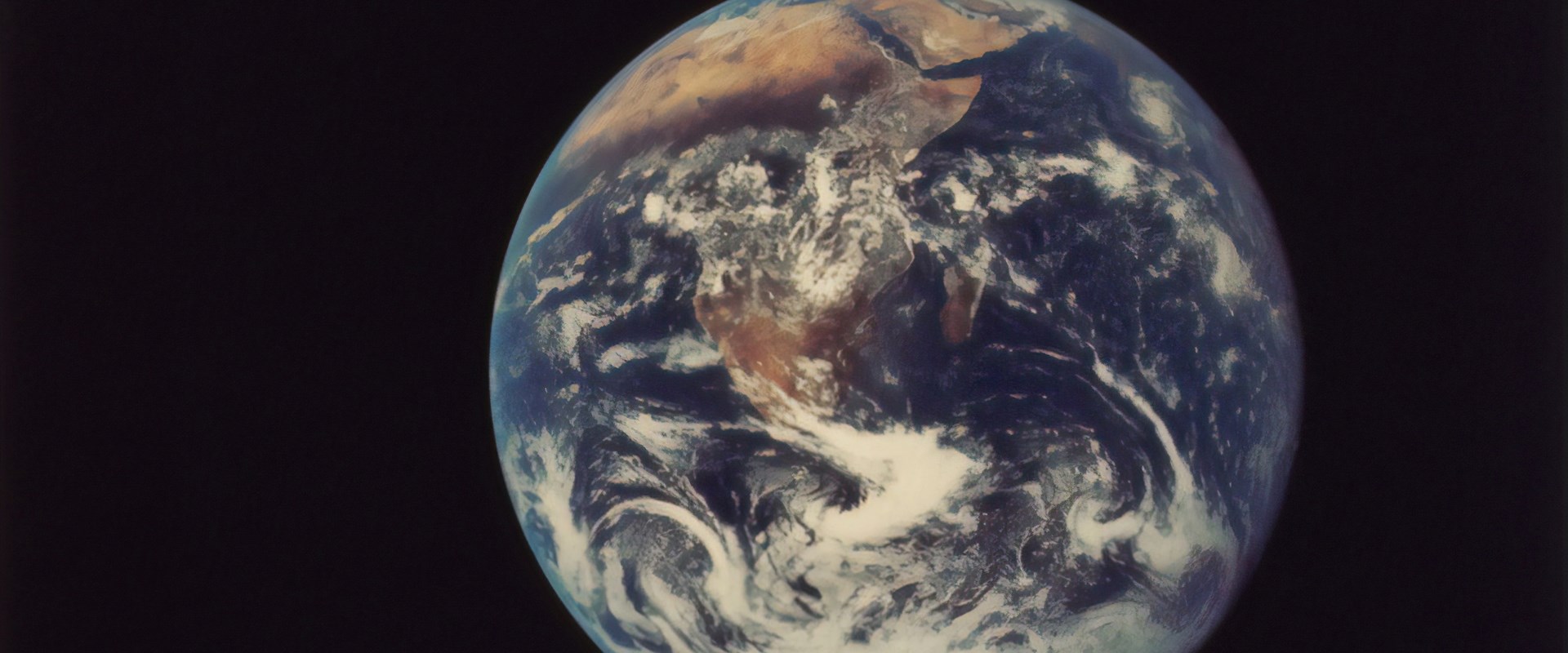
Investigate different aspects of life on Earth, through fascinating fossils, tools for turning the soil and pieces of art reflecting the devastating effects of pollution on our planet.
The Earth is approximately 4.6 billion years old. If you squeezed the entire history of our planet into just 12 hours, what time do you think humans first appeared on the scene? It’s probably later than you think... Why not watch this short animated film to find out?
This film was created as part of a recent exhibition at the National Museum of Scotland about a mysterious period of our past known by natural science researchers as Romer’s Gap – you can follow the rest of the story here: Closing Romer’s Gap: The Story so Far.
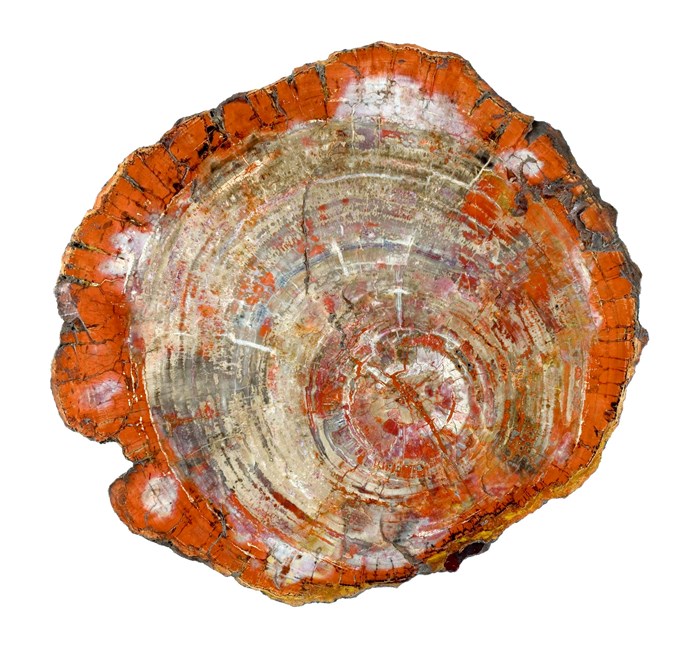
Cross section of a fossil conifer from the Triassic Period of Chinle Petrified Forest, Arizona, USA.
This beautiful, highly polished fossilised tree slice is 210 million years old and originates from the Arizona Petrified Forest National Park in the USA. The park became a National Monument in 1906, thanks to the campaigning work of the Scottish-born naturalist John Muir, and a National Park in 1962. You can find out more about John Muir’s life and his impact on the modern ecological movement here.
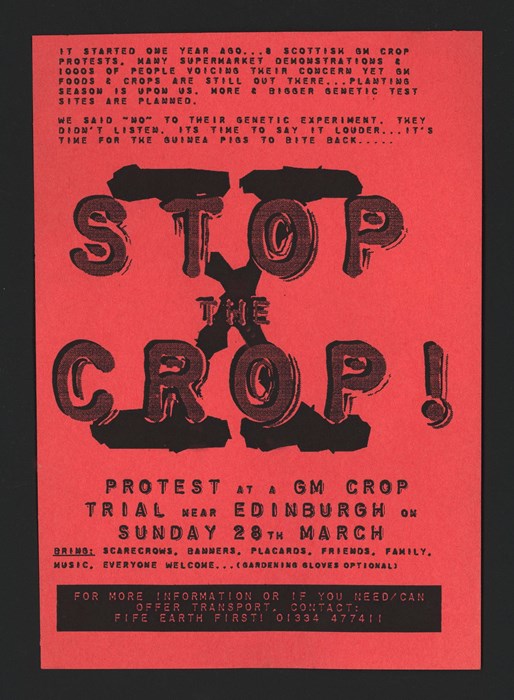
STOP THE CROP! leaflet for the protest at a GM Crop Trial near Edinburgh on Sunday 28 March 1999.
Our collections also contain reflections on more contemporary environmental concerns, ranging from a ‘STOP THE CROP!’ protest leaflet for a GM crop trial near Edinburgh in 1999 to a powerful piece of jewellery, a finger ring made from a broad coiled band of silver and a chunk of clear glass, entitled ‘Praying the Glaciers on Earth Won’t Melt’.
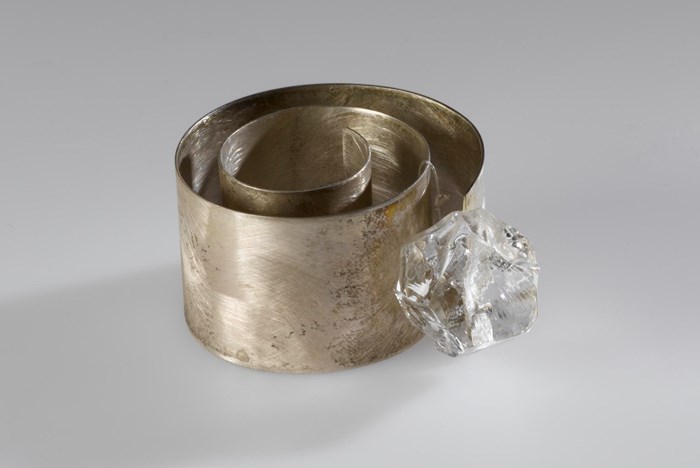
Finger-ring entitled 'Praying the Glaciers on Earth Won't Melt', made by Mitsushima Kazuko, 1997.
A topical discovery for this theme is this intricately detailed embroidered panel from the 1970s, created by graphic designer and textile artist Lilian Dring. Parable II is a collage illustrating the impact of pollution on the planet ‘In the polluted heavens above, in the overpopulated earth beneath, and in the poisoned water under the earth’, and incorporates pieces of waste material, apparently including used can pulls, dead gladioli stems and limescale fur from her kettle!
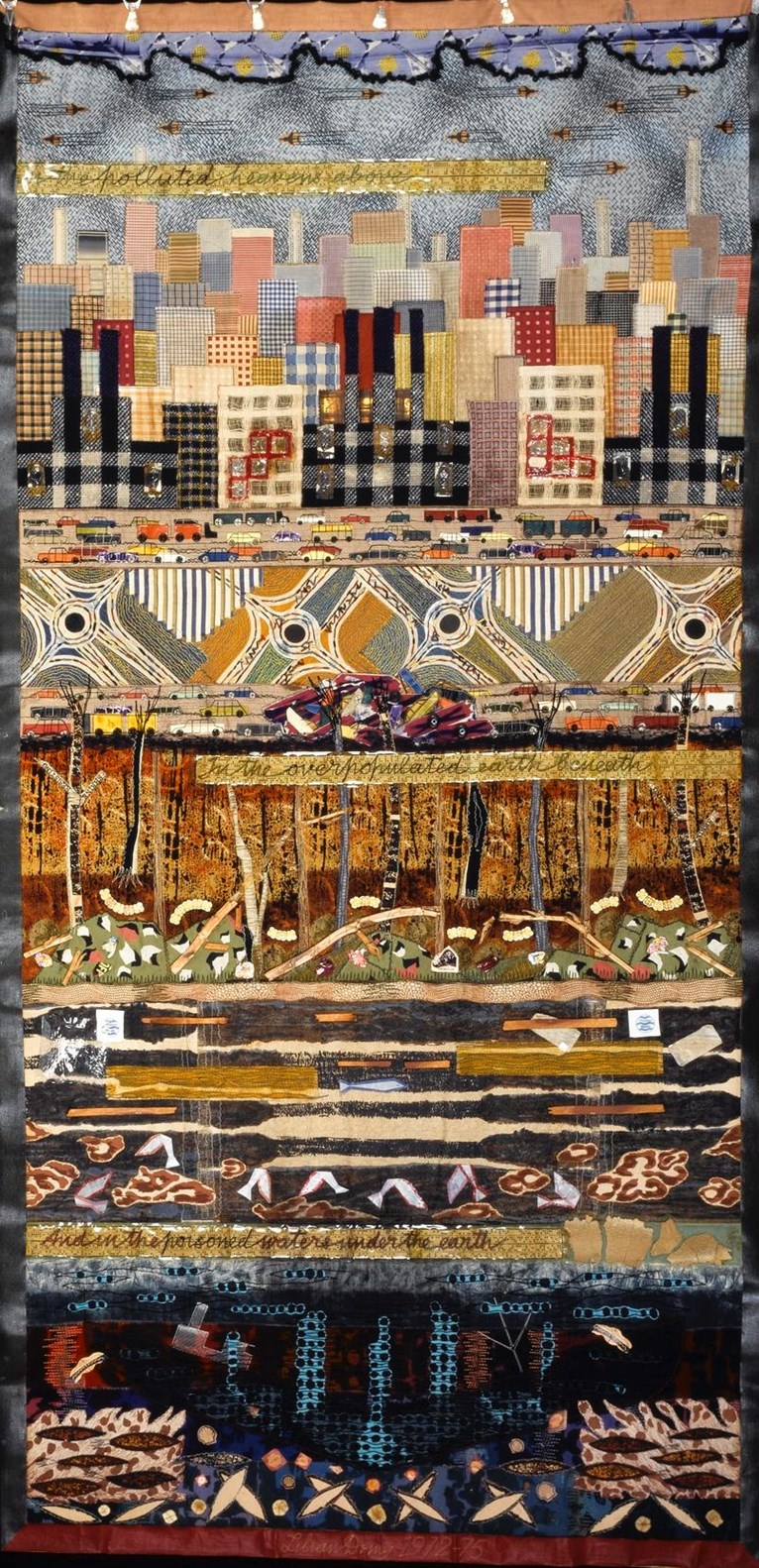
© Lilian Dring
Thinking about earth, rather than the Earth, points us towards different aspects of our collections. At the National Museum of Rural Life we have a plethora of ploughs, tons of tractors and a clutch of combines for working the land. You can trace the development of agricultural technology in our Explore stories, including some vintage footage of combines in action.
Soil has also played a key role in protecting ancient objects over time. In 2001, the remains of an Iron Age chariot burial were unearthed at Newbridge, near Edinburgh Airport. This fascinating discovery led to an enlightening excavation project, demonstrating the science involved in archaeological research.
Part of: Elements of #EdSciFest
Planet Earth. Photo by The New York Public Library on Unsplash